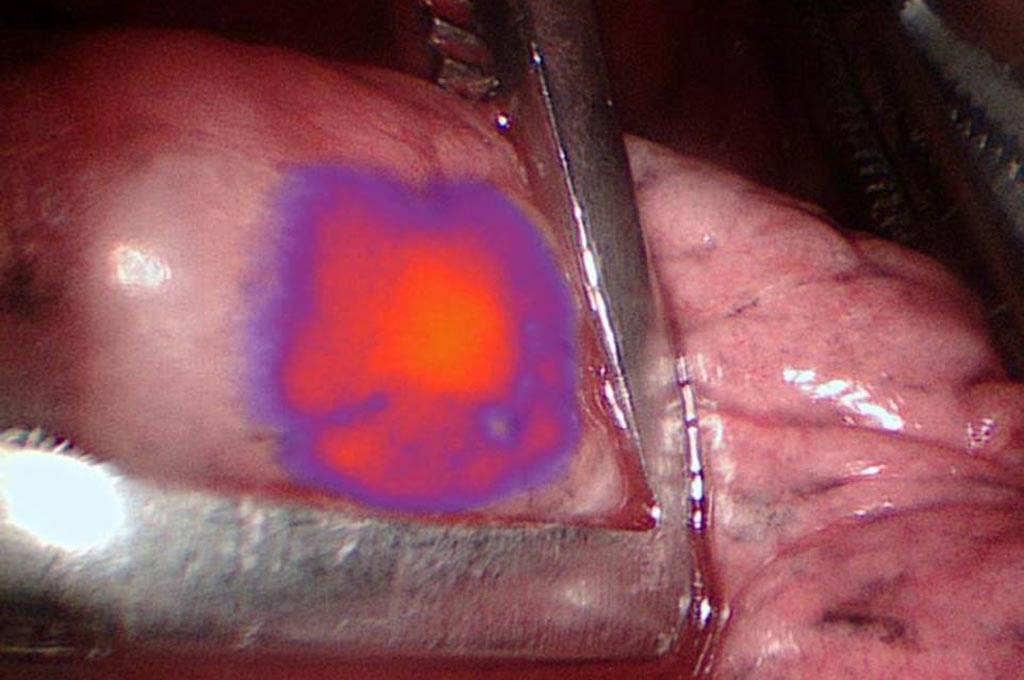Fluorescent Dye Identifies Benign Brain Tumors
By MedImaging International staff writers
Posted on 25 Oct 2017
An intraoperative molecular imaging (IMI) dye helps surgeons identify pituitary adenomas, which can cause blindness, hormonal disorders, and in some cases, gigantism.Posted on 25 Oct 2017
Researchers at the University of Pennsylvania (Penn; Philadelphia, USA) conducted a study to examine if OTL38, a folate analog conjugated to a near-infrared (NIR) fluorescent dye, could help identify pituitary adenomas, which are known to overexpress folate receptor alpha (FRα). To do so, they enrolled 19 adult patients who presented with pituitary adenomas who were infused with OTL38 two to four hours prior to surgery. The VisionSense (Horsham, PA, USA) Iridium 4mm endoscope, with both visible and NIR light capabilities, was used to visualize the pituitary adenoma and its margins in real time during surgery.

Image: The OTL38 conjugated to a NIR fluorescent dye can help identify cancer cells (Photo courtesy of the University of Pennsylvania).
The signal-to-background ratio (SBR) was recorded for each tumor and surrounding tissues at various distances, and immunohistochemical analysis was performed to assess the FRα expression levels in all specimens and classify patients as having high or low FRα expression. Data from 15 of the patients were analyzed, with the remaining four patients excluded for technical considerations. The results showed that intraoperative NIR imaging delineated the main tumors in all 15 patients, with an average SBR of 1.9. The FRα expression level of the adenomas and endoscope-to-sella distance had significant impact on the fluorescent SBRs.
The rate of gross-total resection (GTR) for the 15 patients was 73% (on MRI), compared to 50-70% with conventional approaches. Residual tumor tissue was identified on MRI only in patients with more severe tumors, including cavernous sinus invasion or a significant extrasellar tumor. In three patients with high FRα expression, perfect classification of the tumor margins with 100% sensitivity and 100% specificity was achieved, and intraoperative residual fluorescence predicted postoperative MRI results with perfect concordance. The study was published on September 5, 2017, in Journal of Neurosurgery.
“The study shows that this novel, targeted, near infrared fluorescent dye technique is a safe, and we believe this technique will improve surgery. Surgeons are now able to see molecular characteristics of patient’s tumors; not just light absorption or reflectance,” said lead author associate professor of neurosurgery John Y.K. Lee, MD. “In real time in the operating room, we are seeing the unique cell surface properties of the tumor and not just color. This is the start of a revolution.”
OTL38 consists of two parts; vitamin B9 (a necessary ingredient for cell growth), and a NIR glowing dye. As pituitary adenomas grow and proliferate, they overexpress folate receptors more than 20 times above the level of the normal pituitary gland. The dye binds to these receptors and thus permits tumor identification.
Related Links:
University of Pennsylvania
VisionSense














